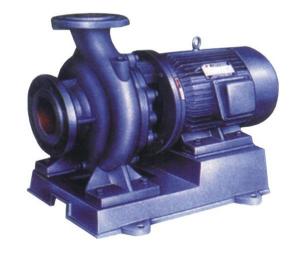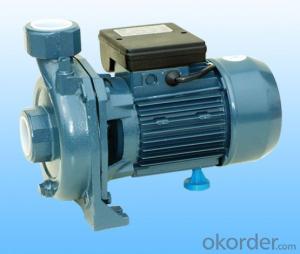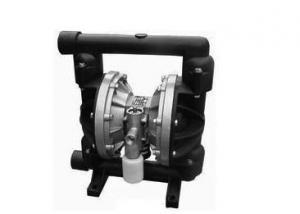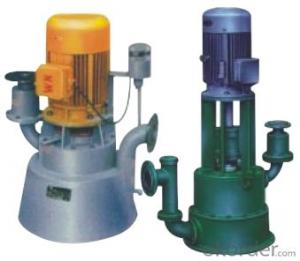IHFFluoroplastic Centrifugal Pump
- Loading Port:
- China Main Port
- Payment Terms:
- TT OR LC
- Min Order Qty:
- -
- Supply Capability:
- -
OKorder Service Pledge
OKorder Financial Service
You Might Also Like
(is shorted for IHF Fluorine Centrifugal Pump ) is designed and maunfactured combine with non metallic pumps in accordance with international standard . The pump body is made of metal and sheel lined with PED (F46 ) .The Pump Cover, impeller , sleeve are full made embedded pieces of metal sintering suppression of overall outsourcing of fluorine plastic. seal exterior stype with advanced bellows mechancial seal.static selection of 99.9% almina ceramic ring (or Silicon Carbide )Moving ring are made of PTFE filled materals , its excllent corrsion-resistant seal wear .
The inlet and outet of pump reforcement of cast steel body , in order to increase pressure of pump .
Motor : 1.5 -90 kw
- Q: Is it necessary to have a pressure gauge on an air pump?
- Yes, it is necessary to have a pressure gauge on an air pump. A pressure gauge provides important information about the pressure level inside the air pump and helps ensure that the desired pressure is reached and maintained. Without a pressure gauge, it would be difficult to accurately determine when the desired pressure is achieved, which could lead to over-inflation or under-inflation of tires, balls, or any other inflatable objects. Additionally, a pressure gauge allows for regular monitoring and maintenance of the air pump, as it indicates any fluctuations or changes in pressure levels over time. This helps to ensure the proper functioning of the air pump and extends its lifespan. In summary, a pressure gauge on an air pump is an essential tool for accurate inflation and maintenance of various objects, making it a necessary component.
- Q: How does an air pump detect when an object is fully inflated?
- The inflation of an object by an air pump is typically detected by either a pressure sensor or a pressure switch. These components continually monitor the pressure inside the object and transmit signals to the air pump to cease inflation once the desired pressure has been achieved. Upon activating the air pump, it initiates inflation by injecting air into the object. As more air is pumped in, the pressure within the object gradually rises. The pressure sensor or switch is specifically designed to gauge this pressure and compare it to a predetermined value or range that signifies complete inflation of the object. Once the pressure inside the object reaches or surpasses the desired level, the pressure sensor or switch detects this alteration and issues a signal to the air pump, commanding it to halt inflation. This signal could manifest as a basic electrical switch that interrupts the power supply to the pump or a digital signal that communicates with the pump's control system. In certain scenarios, the pressure sensor or switch may also offer feedback to the user, indicating that the object is fully inflated. This feedback may take the form of an LED light, a sound, or a visual display. In conclusion, the identification of a fully inflated object by an air pump hinges upon the capacity of the pressure sensor or switch to precisely measure the internal pressure of the object and transmit a signal to the pump, prompting it to cease inflation once the desired pressure has been attained.
- Q: Are there any specific power adapters required for operating an air pump?
- Yes, specific power adapters are required for operating an air pump. The type of power adapter needed depends on the specific model and voltage requirements of the air pump.
- Q: Can an air pump be used for inflating airbags?
- No, an air pump cannot be used for inflating airbags. Airbags in vehicles are typically inflated by a chemical reaction triggered by sensors in the event of a collision.
- Q: Are air pumps suitable for inflating air loungers for camping?
- Yes, air pumps are suitable for inflating air loungers for camping. Air pumps provide a quick and efficient way to inflate air loungers, ensuring they are properly filled and ready for use during camping trips.
- Q: How does an air pump create pressure?
- By utilizing mechanical force, an air pump exerts pressure by bringing air molecules closer together and heightening their density. When engaged, the pump typically comprises a piston or a diaphragm that oscillates within a cylinder. As this piston or diaphragm moves, it diminishes the cylinder's volume, causing compression within the enclosed air. Consequently, the compression augments the quantity of air molecules within a given space, thereby resulting in elevated air pressure. The compression and pressure generated are directly proportional to the frequency or velocity at which the piston or diaphragm moves. Subsequently, the compressed air finds utility in a myriad of applications, including tire inflation, empowering pneumatic tools, and supplying air to a scuba diver.
- Q: How long does it take for an air pump to inflate an object?
- The duration of inflating an object with an air pump heavily relies on several factors, including the object's size, type, the air pump's power and efficiency, and the desired level of inflation. Smaller objects like balloons or small inflatable toys can typically be inflated within a few seconds to a couple of minutes. Conversely, larger objects such as air mattresses or inflatable pools may necessitate several minutes to even an hour for inflation, contingent upon their size and the air pump's power. Furthermore, the implementation of high-powered air pumps or specialized inflation devices can substantially diminish the required inflation time. Consequently, it is crucial to consider the specific object and the air pump's capabilities in order to estimate the time required for complete inflation.
- Q: Can an air pump be used for inflating inflatable playhouses?
- Yes, an air pump can be used for inflating inflatable playhouses. In fact, it is one of the most common and convenient methods of inflating them. An air pump can provide a steady and controlled stream of air, allowing you to quickly and efficiently inflate the playhouse. It is important to use an appropriate air pump with the correct nozzle size to ensure a proper fit and prevent any air leaks. Additionally, some air pumps have adjustable pressure settings, which can be useful for inflating larger playhouses or adjusting the firmness of the inflatable structure. Overall, using an air pump for inflating inflatable playhouses is a practical and reliable option.
- Q: Are air pumps suitable for inflating air mattresses with integrated air pumps?
- Air mattresses with integrated air pumps can be effectively inflated using air pumps. These integrated air pumps are specifically designed for air mattresses, offering a convenient and efficient way to inflate them. They can be either built into the mattress itself or attached to it, allowing for easy inflation and deflation whenever necessary. Whether integrated or standalone, air pumps contribute to a swift and effortless process of filling the mattress with air, saving time and effort in comparison to manual inflation methods. By ensuring proper inflation, they guarantee a comfortable sleeping surface. Thus, it is advisable and appropriate to use air pumps with integrated air pumps when inflating air mattresses.
- Q: Can an air pump be used for inflatable outdoor seating?
- Certainly! An air pump is capable of being utilized for inflatable outdoor seating. As a matter of fact, it stands as the prevailing approach for inflating outdoor seating options like inflatable chairs, sofas, or loungers. The air pump is specifically engineered to promptly and effectively inflate objects by compelling air into them. These pumps are commonly equipped with diverse nozzles or adaptors to accommodate varying valve sizes encountered in inflatable seating. The use of an air pump ensures that the seating is adequately inflated, thereby guaranteeing comfort and safety. Additionally, numerous air pumps also incorporate a deflate function, facilitating the swift deflation and storage of the seating when not in use.
Send your message to us
IHFFluoroplastic Centrifugal Pump
- Loading Port:
- China Main Port
- Payment Terms:
- TT OR LC
- Min Order Qty:
- -
- Supply Capability:
- -
OKorder Service Pledge
OKorder Financial Service
Similar products
Hot products
Hot Searches
























